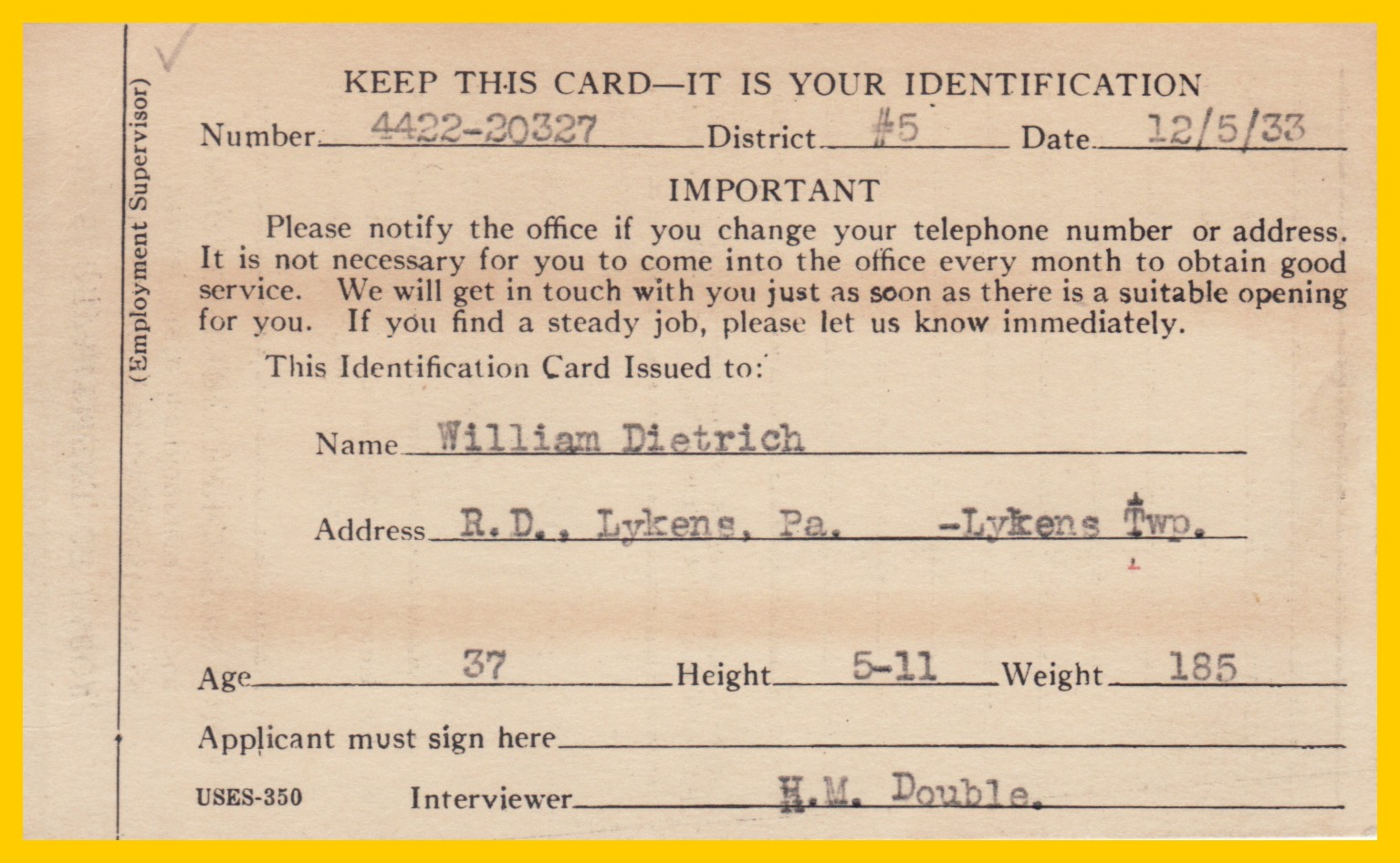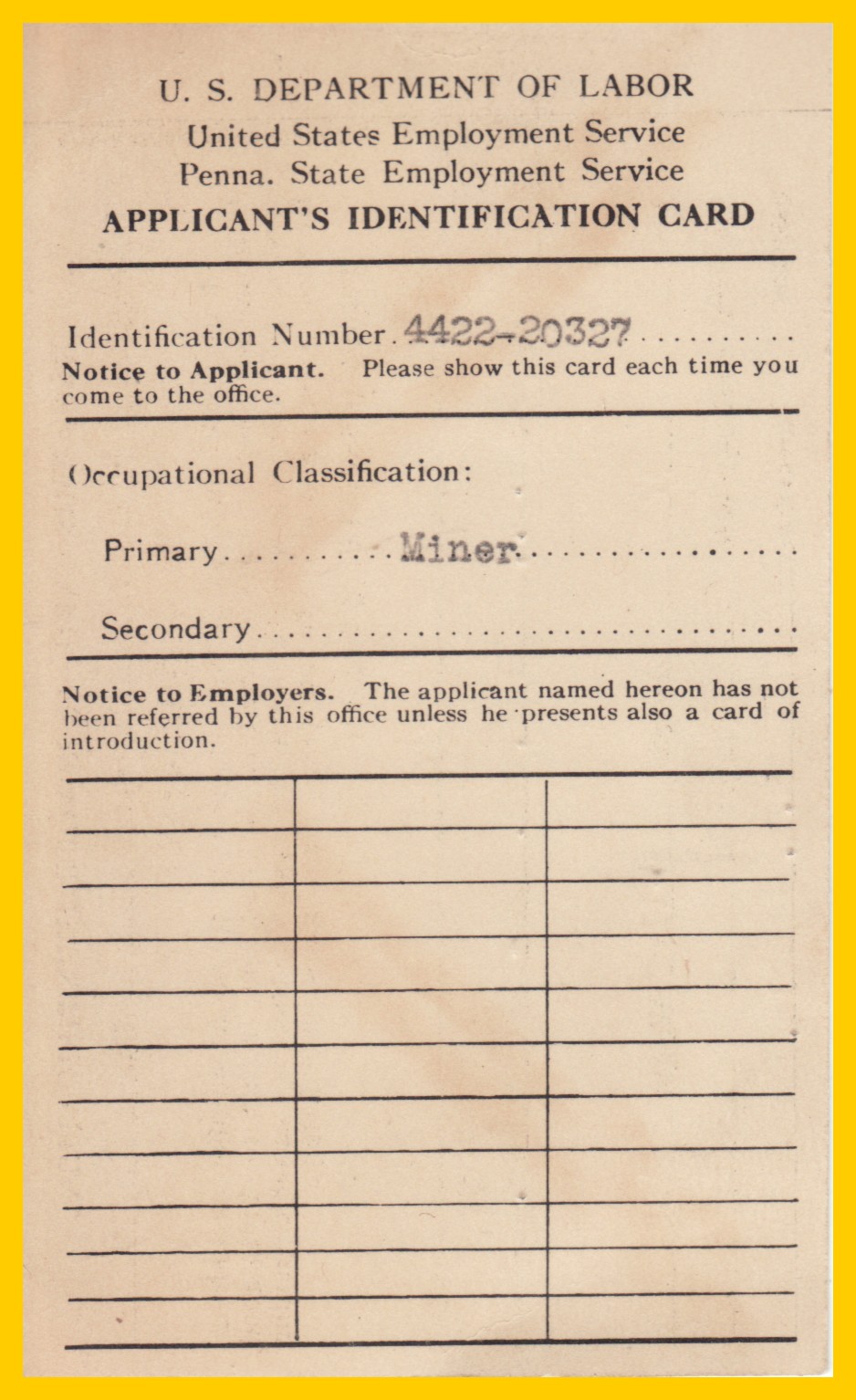Both sides of an identification card issued by the U. S. Department of Labor, United States Employment Service and the Pennsylvania State Employment Service, dated 5 December 1933.
The registration was for William Dietrich, R. D., Lykens, Pennsylvania (Lykens Township), who at the time was 37 years old, stood 5 foot 11 inches tall, and weighed 185 pounds. His primary occupational classification was as a “miner,” and no secondary classification was recorded.
The card reads:
IMPORTANT
Please notify the office if you change your telephone number or address. It is not necessary for you to come into the office every month to obtain good service. We will get in touch with you just as soon as there is a suitable opening for you. If you find a steady job, please let us know immediately.
William Dietrich worked at the mine operation at Bear Gap, which was shut down by the owners in the early 1930s as the Great Depression was taking hold. During the 1930s, he did not return to mining, but many miners who were out of work opened what were called “bootleg mines” and independently worked them. Because the safety conditions were not regulated, there were many casualties. In 1939, two of William Dietrich‘s younger brothers, Lee Dietrich and John Dietrich were killed in one such bootleg mine, and William’s son, Harold Dietrich, barely escaped before that same mine caved-in.
There is no evidence that the Federal and State Employment Service ever obtained a job for William Dietrich, and during the 1930s, he worked odd jobs and supplemented the family income with dairy products and produce from his own farm. Near the end of the 1930s, he obtained employment as caretaker of the Gratz Union Cemetery in Gratz, a position that he held for several years into the 1940s. After World War II, he obtained employment with the State Road Department, a position from which he retired in the early 1960s.
______________________________
Corrections and additional information should be added as comments to this post.

